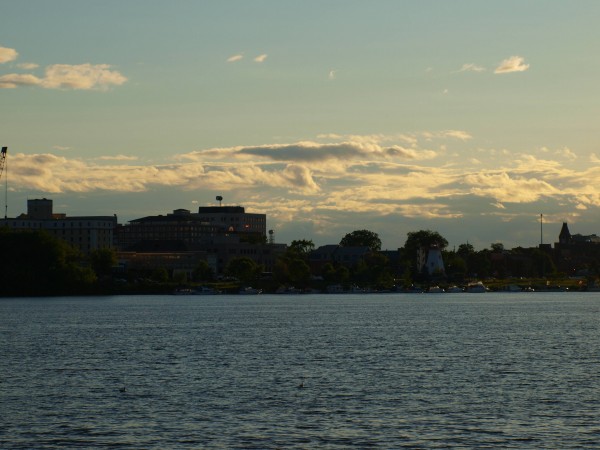FREDERICTON – Fredericton is a small city – some would say a town – that offers a lot, including cultural festivals and activities, a rich arts scene, two universities, the seat of provincial government, and an emerging start-up and tech scene.
To enhance these advantages, neighbourhood design is important, including displays of street art, and walkable and mixed use neighbourhoods. Investing in walkable downtowns and downtown-like neighbourhoods is important with the increased desire for walkability and the growing attraction of downtowns for investment. Urban San Francisco now exceeds suburban Silicon Valley in venture capital investment. As well, it is important to note the attraction of these neighbourhoods for young people, 77% of Millennials in the United States plan to live in urban cores according to a real estate survey by RCLCO.
In all this, it is important to have the kind of neighbourhoods which foster community and collaboration, that promote the city’s unique identity, to have the kind of public spaces which foster socialization, random meetings, and collaboration.
Fredericton’s city centre plan presents a comprehensive plan that moves the city’s downtown in the right direction.
Fredericton’s City Centre Plan
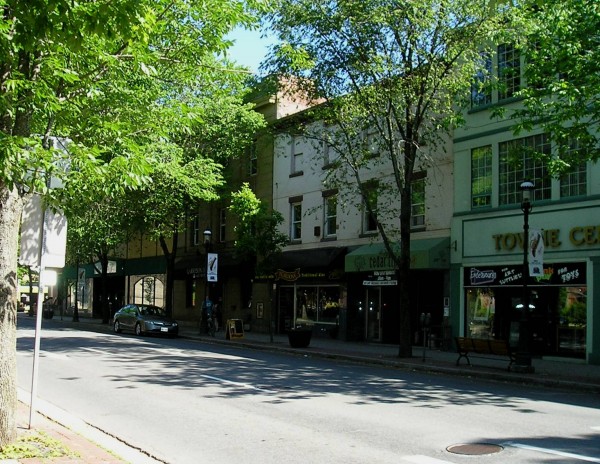
The city centre plan recognizes the importance of downtown as a cultural and economic hub, its importance for tourism, commerce, heritage, and in building a sense of identity and place. The plan recognizes the appeal of downtowns, the need to promote downtown Fredericton as a “desirable place to invest and grow in, where highly educated graduates want to stay.”
There are many great initiatives outlined in the plan, including connecting the city centre to one of its biggest natural assets, the Saint John River, which is currently separated from the waterfront by parking lots and a thoroughfare. The plan highlights how the city seems to “turn its back” on the river. The importance of this natural asset – the need to connect the urban and the natural – is emphasized in the revised vision statement set out in the plan, where “the Saint John River will once again be a defining and integrated feature of the city centre.”
Achieving this aim includes eliminating excessive lanes/ramps – a product of car-centric planning – entering onto the Westmorland Street Bridge, in particular eliminating the cloverleaf entrance. This would open up land to new uses and development, and open up a greater connection between the city centre and the river. The plan also sets out the redevelopment of parking lot land, urbanizing the St. Anne’s Point Drive thoroughfare and remaking it into a boulevard. These are all moves in the right direction, towards planning that is centred more on people than on cars.
Another positive aspect of the city centre plan is the emphasis on streetscapes, and criticism of box-like buildings that present blank walls.
The plan emphasizes the importance of streetscapes, providing an environment that is aesthetically pleasing and inviting to pedestrians. The city centre plan rightly highlights the need to refurbish King’s Place Mall to be more inviting at the street level, which presents blank walls on some sides, and overall has a mall-blockish look. King’s Place stands as a testament to “urban renewal” efforts of the 1970s and 1980s, when downtowns tried to compete with shopping malls by becoming more like them, often with disastrous consequences for historic buildings which were masked with facades or demolished entirely – when destroying downtowns seemed the best way to save them.
Burlington Vermont offers a good example of an urban mall that blends into a historic and walkable streetscape, including the adjoining pedestrian-only Church Street.
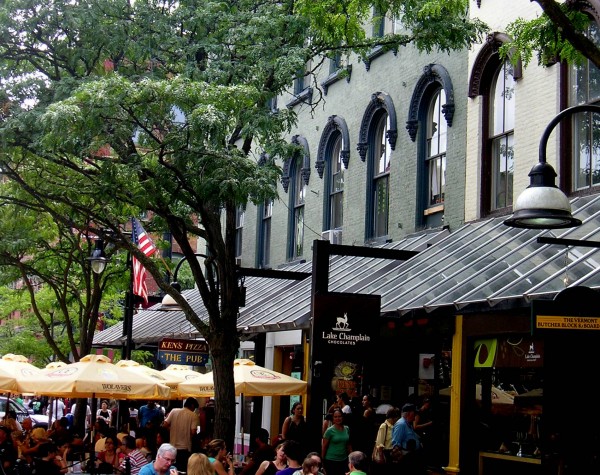
Other great initiatives in the city centre plan include the promotion of small “pocket parks” that offer valuable mini-green spaces, an emphasis on infill development, the promotion of public art (especially valuable given the city’s arts and crafts college and strong arts scene), and flex-spaces for parking lots during down times, to promote multiple uses. The parking lot at the Boyce Farmer’s Market on George Street is particularly cited as an example.
The plan also provides a detailed section on implementation, rightly outlining challenges that may be faced. The implementation section highlights the need to work with and win over stakeholders, to win over provincial and federal governments (in the case of the Westmorland Street Bridge). A clear warning in this section is made against the plan falling by the wayside, becoming subject to inaction.
Overall, this is a positive plan, recognizing the importance of Fredericton’s downtown, its multiple functions as an economic and cultural hub, and how these functions can be promoted and enhanced through proper urban design.
A Plan for the Rest of Fredericton
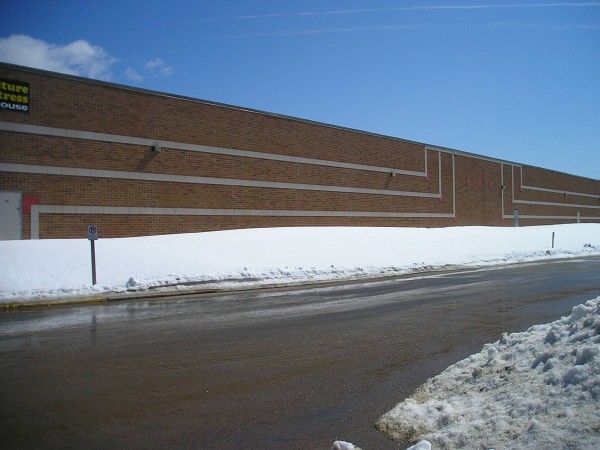
In addition to downtown, it is important to recognize the role of other parts of the city, to develop a holistic vision of Fredericton. The city’s Main Street Urban Design Plan lays out a vision for creating a northside town centre with walkable streets and mixed-use developments (commercial on the first floor and residential above). This plan recognizes the important role a walkable and distinctive Main Street can play for the northside.
It is important to consider other neighbourhoods in the city, the challenges they face, and the possible solutions that can be consider, recognizing the potential and challenges therein.
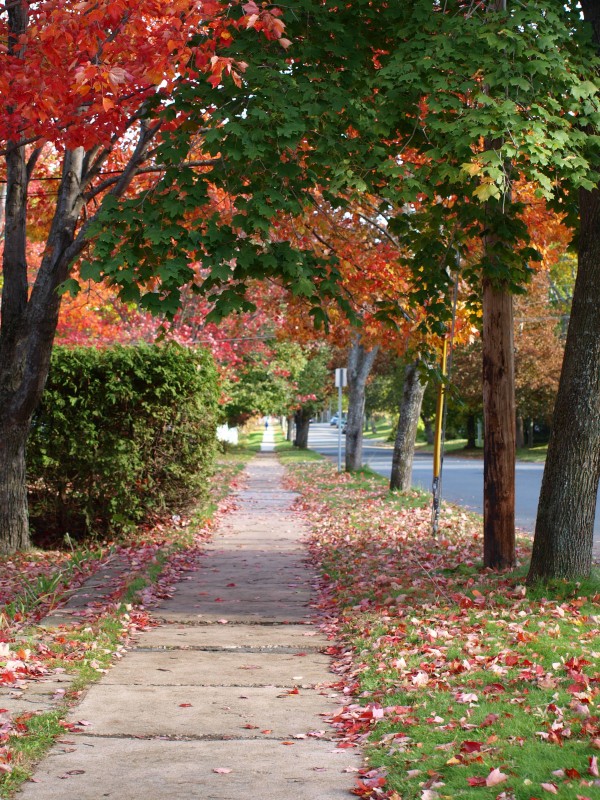
For example, Fredericton’s “inner-suburban” neighbourhoods on the southside – Skyline Acres and the Hill Area where I live – face unique challenges. Many of these neighbourhoods were established in the 1960s and 1970s. Many homeowners in these areas are now seniors, which can create considerations in promoting public transit and walkability for seniors who are less able to use cars. Many houses in these inner-suburbs have been sold off and become rental properties (in many cases rented by university students) which is something not intended in their original use. This brings to the fore city-university (“town and gown”) relations.
Permanent residents are concerned about noise (from student parties for example), about maintenance of these properties (especially upkeep by landlords), and the impact on the neighbourhood of bringing in a more transitional population. For students, the concern is about landlords’ providing fair rent and properly maintained property.
Michael Fox, of Mount Allison University, in his book, Town and Gown: From Conflict to Cooperation, gives an in-depth analysis of town-and-gown relations and how conflicts can be mitigated through cooperation and dialogue between the city and the university community. The book highlights the need to give students a sense of belonging and stake in their neighbourhoods while addressing the concerns of permanent residents about noise and property maintenance.
Another issue in the inner-suburbs are aging strip malls and retail facilities that provide potential for refurbishment. One example is the Canadian Tire Plaza on Smythe Street (formerly the K-mart Plaza) which is the oldest strip mall in Fredericton. Another example is the Brookside Mall on the city’s northside which has often seemed anemic in business compared to the southside’s Regent Mall.
These properties provide potential for retrofitting, to create more walkable and pedestrian friendly environments – something that can be done through minor improvements such as walkways connecting the street for pedestrians or through larger-scale refurbishments. It is worth noting that the Canadian Tire Plaza (and adjoining commercial areas on Prospect Street which includes third places like the Hill Top Pub and a Second Cup coffeshop) as well as the Brookside Mall are in close proximity to residential areas but essentially cut off by blank wall facades and massive parking lots.
In the west hill area of the southside, another consideration is if O’Dell Park can be better integrated into surrounding neighbourhoods, through new entrances or walkways.
Other areas of the city to consider are the old rail lands and the potential for a “midtown” Fredericton which could include lofts for start-up enterprises (especially in those areas in close proximity to the University of New Brunswick) and the potential for mixed-use developments. Marysville, on the northside, is a historic British-style mill town which includes an employment centre – the provincial departments of the environment and local government – and historic residences. However, Marysville lacks a truly walkable commercial district – of restaurants and coffeeshops – that could enhance the character of the neighbourhood and draw on business from residents and from public servants during the workday.
In all this, it is especially important to consider areas of new construction – such as Bishop Drive – and for new buildings to reflect the importance of walkability and street design. It is better to get it right in the first place rather than have to embark on “sprawl repair” after the fact.
A Real Opportunity for Fredericton
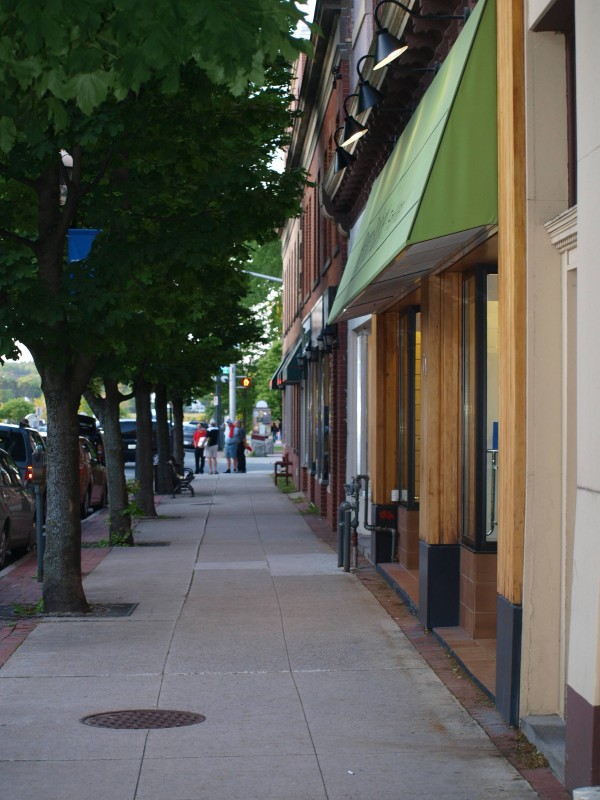
There is a real opportunity for Fredericton to be a leader in sustainable urban design, to draw on the unique advantages of being a small city with many “big city” amenities, of respecting and promoting its historic heritage while looking forward with new developments that set the model for 21st century urban sustainability. The City Centre Plan and the Main Street Urban Design Plan are both positive steps in the right direction, towards a pedestrian and bike friendly city, towards a city that promotes active streets as well as interesting and unique neighbourhoods.
Now is the time for a holistic vision for the city as a whole, of identifying and recognizing the roles and challenges of neighbourhoods in the city. To consider the potential – through small-scale or larger improvements – of places such as the West Hill area of the southside, “midtown” Fredericton, the Brookside Mall area, and Marysville. It is also important to consider urban design in newer neighbourhoods such as Bishop Drive.
There is real opportunity to innovate, to be leaders in urban planning and design, for Fredericton to be a leader in redefining the small city experience.
Hassan Arif (@hassannb) is a PhD candidate in Sociology at the University of New Brunswick in Fredericton where he is specializing in urban sociology and local government.

